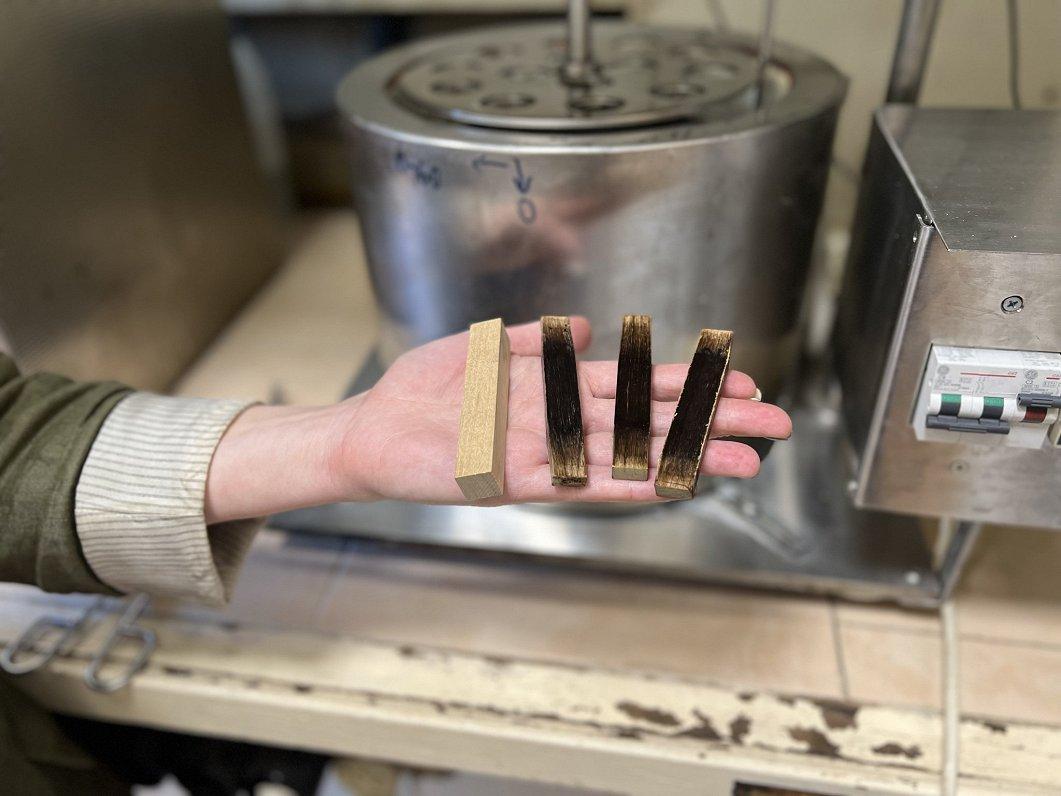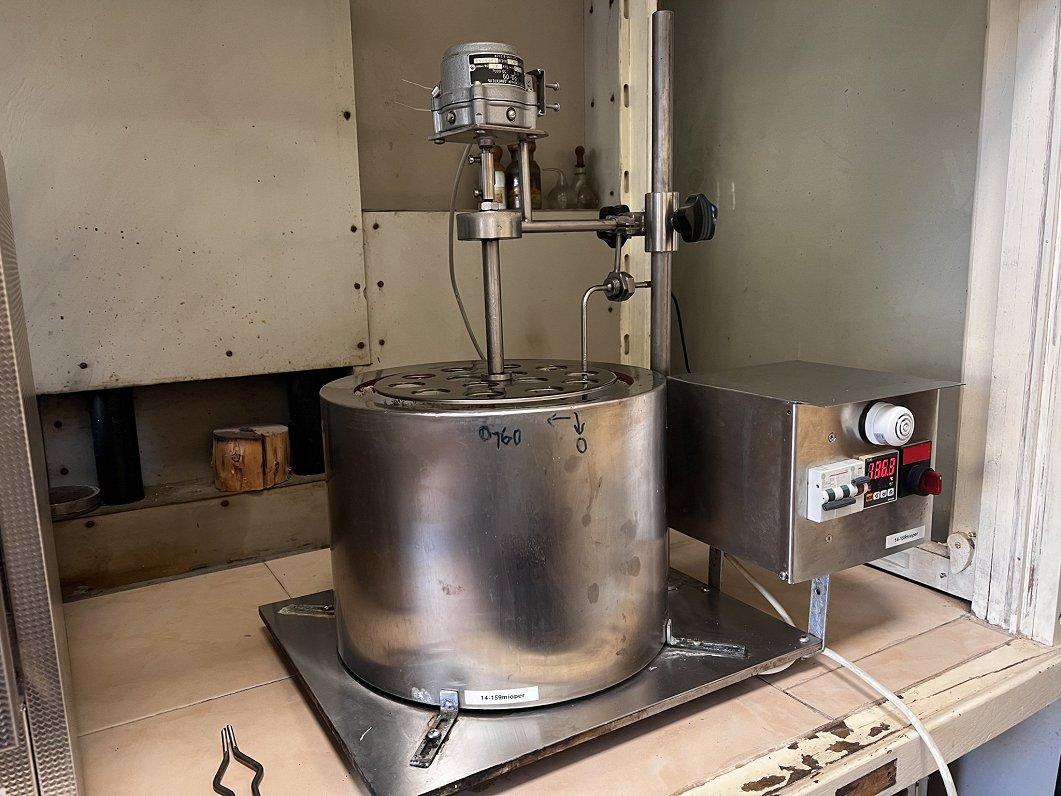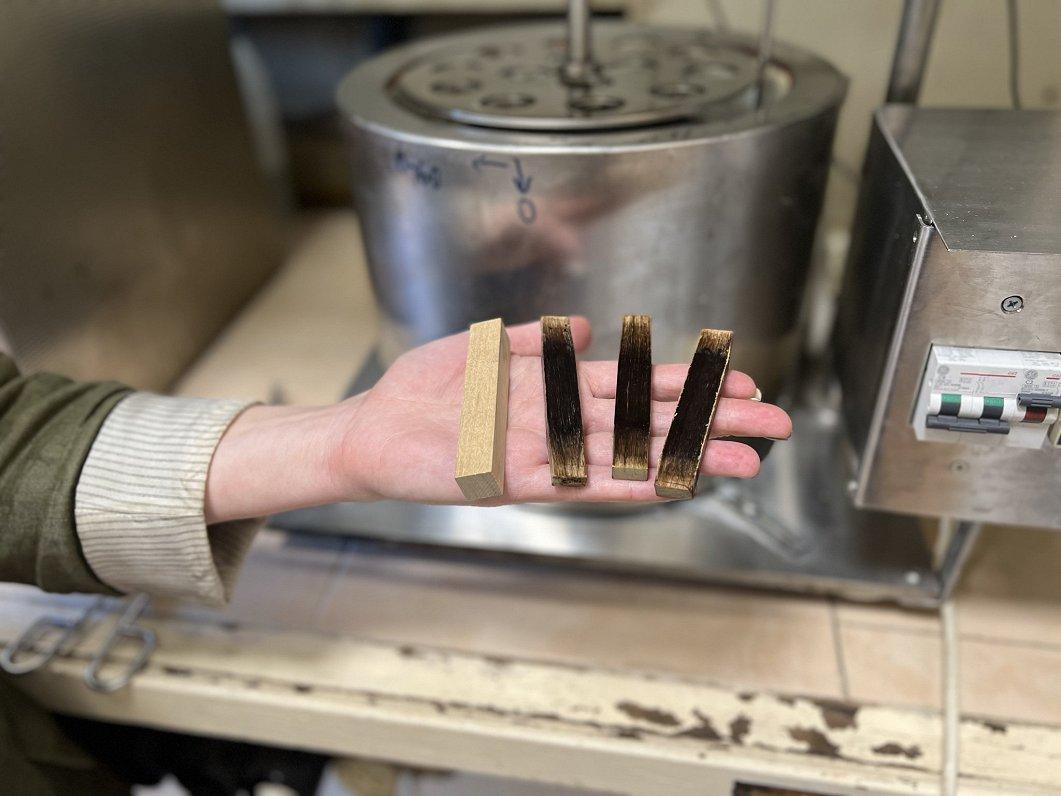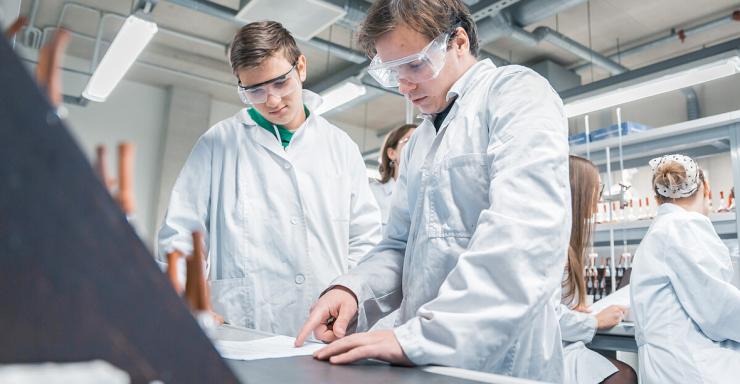Latvian researchers plan to develop bone implants made from wood. So far, titanium has been unrivaled in this field. However, metal implants have drawbacks – they can promote repeated fractures and cause discomfort for patients. Riga Stradiņš University (RSU) is collaborating with the Latvian State Institute of Wood Chemistry on an innovative project. Researchers from both sectors have found that there have been only a few publications worldwide on wood-based bone implants.

In the laboratory of the Latvian State Institute of Wood Chemistry, a glycerine bath is in operation. It is a cylindrical device the size of a soup pot, where wood blocks are boiled under increased pressure at 145 degrees Celsius. The goal is to soften the wood. This process is crucial for the future development of wood-based implants.
"Why do we need this? So we can densify the wood, and it will retain its shape. By densifying, we can increase the density up to three times, which in turn increases the mechanical properties. The strength of the wood material increases three times, and depending on the type of wood, the elasticity can increase up to ten times," explained Dr. Laura Andže, lead researcher and chemist at the Latvian State Institute of Wood Chemistry.
The idea originated several years ago when specialists from the Latvian Microsurgery Center approached Andže with a story about a hip implant made from juniper wood, developed and patented by medical doctor Ēvalds Ezeriešs. This implant had been tested in veterinary medicine in the 1990s. However, over time, it was found that juniper was unsuitable for implants. Birch was found to be the best option, the researcher said.
"This density – hardness – is equivalent to cortical bone. Both human and animal cortical bone is the outer part of the bone. The strength of this densified wood is just as high as that of cortical bone. Therefore, we believe that the strength of our material will be sufficient for it to function as an osteosynthesis implant. Osteosynthesis is a method where a broken bone is screwed or stabilized to reinforce it, allowing the bone to heal together," Andže explained.

The goal is to offer an alternative material to metal implants, which are used as screws or plates to stabilize broken bones.
"When a bone is stabilized with a titanium implant, a repeated surgery is often needed to remove the implant because, while the bone heals, the titanium implant is not accepted as part of the bone. Since wood, by its nature, is biocompatible according to other researchers' studies, the hope is that we will be able to screw it in as a screw, and as the bone heals, it will accept this implant as part of itself," explained Andže.
Researcher Andže is one of the supervisors of the doctoral dissertation of Vadims Ņefjodovs, a specialist at the Micro-surgery Centre and a PhD student at Riga Stradiņš University. He is also one of the microsurgeons who came up with the idea for such an implant. Ņefjodovs shared that the area of expertise focuses on problems related to hand bones.
"From the idea to a finished product that can be used on real patients, the path is long and consists of several stages. First, we need to prove that our material is not harmful. Right now, we are conducting experimental research with animal bones. The next stage would be working with cells. Then, we can hope that we will be allowed to conduct research on animals," said Ņefjodovs.
The researchers cannot give a clear timeline for when bone implants made from wood could be used by humans, estimating it could happen in 10-20 years. However, to reach this goal, they may need several million euros.


